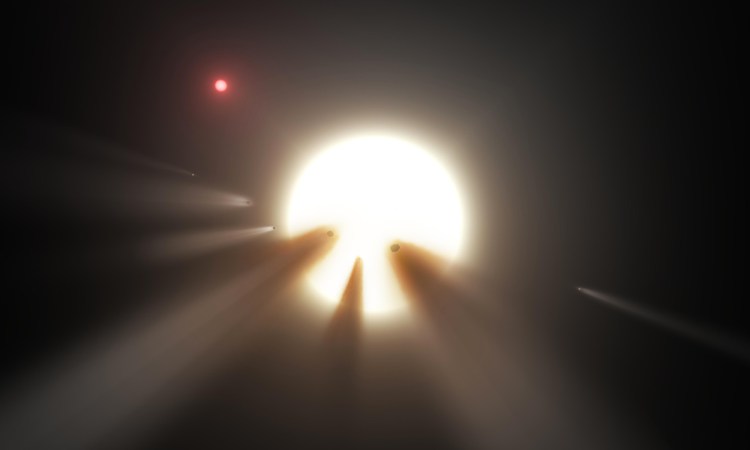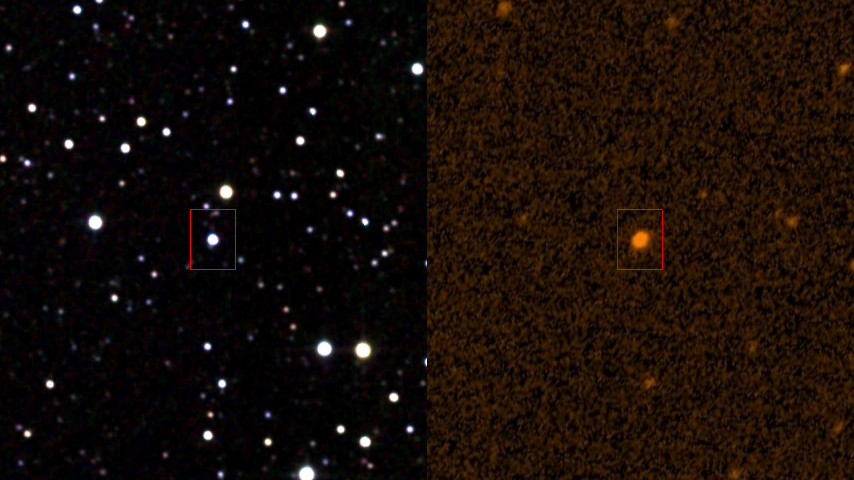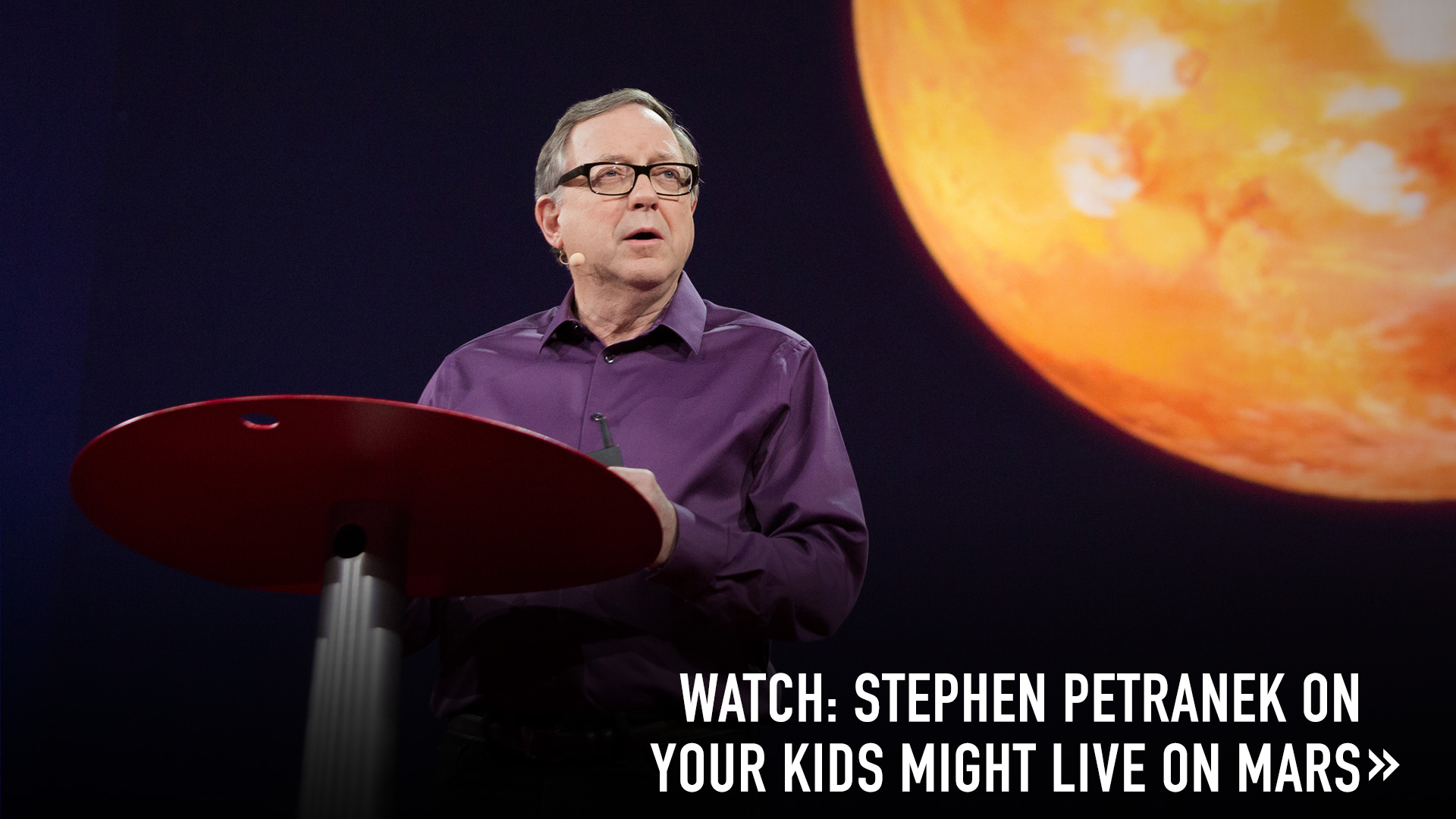
The strange behavior of Tabby’s Star, or KIC 8462852, has inspired modern astronomy’s wildest guessing game, with explanations ranging from aliens to sunspots. Writer Stephen Petranek got Tabby herself to assess the competing ideas.
Far, far away in the constellation Cygnus lies a relatively ordinary F class star about one and a half times the size of our Sun. Astronomers unromantically call it KIC 8462852; others call it Tabby’s Star.
If you could travel at the speed of light, it would take you about 1,500 years to reach it, meaning it’s too distant to have much of an impact on earthlings. But it just might be the most significant object homo sapiens has ever looked at — out of the billion trillion stars in our universe, this one is different from any other star we’ve yet observed.
Data from the Kepler space telescope has left astronomers in awe: recent observations show that Tabby’s Star has dimmed dramatically over the past century. It dimmed about 18 percent in a single week in 2011 and as much as 22 percent over a period of a hundred days in 2013. Data and old photographs going back to 1890 indicate the star has dimmed during both very long intervals as well as very short ones. This is scientific heresy, however. Stars don’t do that; a typical star actually gets brighter as it ages.
This weird behavior began to attract attention in September 2015 when astronomer Tabetha Boyajian (TED Talk: The most mysterious star in the universe) authored a paper titled “Where’s the Flux”. Astronomers refer to a star’s brightness as flux, and yes, the paper’s initials are not coincidentally WTF. It caused an uproar soon after it was published in the prestigious journal Monthly Notices of the Royal Astronomical Society and astronomers have been furiously positing what is going on ever since.
Why all the excitement? Because, maybe, aliens. The tension between two schools of thought have driven much of the interest: those who think the dimming could be caused by an alien civilization and astronomers who prefer a natural-phenomena explanation. “Scientists like puzzles,” says Boyajian, a professor of astronomy and physics at Louisiana State University. “Trying to figure this out is actually fun.” Astronomers have published or proposed more than a dozen serious papers, concepts and theories to account for what is happening to Tabby’s Star. Here’s her evaluation of the latest explanations, from the far-fetched to the possibly somewhat likely.

1. An alien civilization is utilizing the star’s energy: “Aliens are in consideration until we can rule them out,” says Boyajian. “We will continue to observe this star, and we will learn.”
2. A huge planet around the star is blocking the light: Boyajian doesn’t buy this theory. “A Jupiter-size planet around this star would dim it by one half of a percent,” she says. “You would need more than 50 Jupiter-size planets to be transiting across the star all perfectly lined up at the same time to get such a smooth decrease in the star’s brightness. It’s pretty much impossible for that to happen.”
3. A black hole near the star is eating its light: Nope. “That idea doesn’t work,” she says. “A black hole would lens the light, magnify it and make it brighter.”
4. A very large black hole in the space between us and the star is eating its light: As Boyajian points out, “You’d have a lot of junk flying around the edge of the black hole, and some of it could be doing the light blocking. This is possible, but not very likely, because it doesn’t really explain the long-term dimming we observe. Whatever hypothesis is put forward has to explain day-long dips in the light as well as decades-long dimming.”
5. Star-forming clouds of interstellar gas and dust are passing between us and the star: “If you look at pictures of the Milky Way,” Boyajian says, “you see dark bands in the middle. That’s dust. We know it can block light very well. The problem is, you’d be looking at several orders of magnitude of density and sizes greater than what we’ve ever observed before. The kind of cloud it would take to explain our observations is a whole lot more dense than any other cloud that we actually know of. I’m not saying it couldn’t exist; it’s just something we don’t know about. What’s hard for me to wrap my head around is that you have this kind of stuff in interstellar space everywhere, in all directions. So why don’t we see this happening everywhere? Why is it we’re only seeing this happen with one star?”
6. The dimming is caused by huge sunspots: Not so likely. “These kinds of stars are not known to have sunspots at all,” Boyajian says. “F type stars don’t have the convective atmosphere that it takes to form sunspots, like our Sun, and they don’t have the magnetic field necessary.”
7. Small and large patterns of disruption similar to those observed in avalanches on Earth suggest Tabby’s Star is about to undergo a phase transition: “The authors of a recent paper looked at the data and said it shows the star has similar characteristics to other phenomena that we’ve seen, suggesting there is some instability within the star that is going to produce a change soon,” Boyajian says. “In the end, the authors said that it may not explain anything. I wouldn’t want to rule out that some sort of intrinsic phenomenon is happening to the star. What if this is some sort of special stage in stellar evolution that we don’t know about because our models aren’t sophisticated enough? Still, the paper is more exploratory than an explanation.”
8. Debris from colliding planets blocks the light: “Suppose you have a very young solar system with a lot of debris that hasn’t been swept up yet and formed into planets,” Boyajian asks. “You could have a catastrophic event, like two huge bodies that ran into each other and that produce a lot of shrapnel that blocks out the starlight. But the problem is, heat would be generated. We see no infrared gain associated with this star.“
9. A single planet with huge moons is in an elliptical orbit around the star. The planet’s moons are kicked out of orbit as it gets close to the star. The planet’s orbit degrades and the star gobbles it up, causing an increase in brightness that dims over time: “This paper builds a model that drops a planet into the star,” Boyajian says. “The moons are still in orbit and are being torn apart — which explains the short-term dimming of the star — while the planet being taken into the star explains the brightening of the star that slowly dims over time. The probability that this is the explanation is so small that we should not ever expect to see this elsewhere.”
10. Dust from a swarm of comet fragments, broken up in a recent collision, is blocking the starlight: “I still favor this one. I haven’t seen anything more workable, but I’m biased because it’s the one we proposed in the paper that I’m the lead author on,” Boyajian says. “An awful lot of things have to line up for this to be the explanation. All the ideas out there, including this one, are several orders of magnitude farther away from an explanation than I’m comfortable with. We’re monitoring the stars nearby this star, and we’ll be looking for any similar periodic events.”
So even though Boyajian leans towards the last theory, she cautions, “I think we probably haven’t heard the right explanation yet.” And while she hopes we’ll find intelligent life somewhere in the universe, she doubts that dimming stars are the best place to look. “We’ll find it when we find a twin of Earth and when our instruments are good enough to detect exactly the right amount of oxygen in its atmosphere, and greenhouse gases, and plate tectonics, and all the other things we know promote life. There’s an Earth-like planet in the habitable zone of one out of every five stars that’s like our sun. There are tons of Earths out there that can support life,” she says. “We just need to find one and start listening.”
Meanwhile, a lot more Kepler data about Tabby’s Star still needs to be analyzed. The Greenbank radio telescope in West Virginia has piled up readings on the star, as has the FAST radio telescope in China. “The datasets collected are very very big; they’re being processed right now,” Boyajian says. “There are dozens of searches and observations going on focused on this star, including several by SETI [the Search for Extra Terrestrial Intelligence Institute, a 2009 TED Prize winner]. Radio telescopes around the world are on alert to focus on the star when we see unusual activity.”













